In this second post of her series about the connections between Classics and the natural world, UC Classics student Laura Bythell explores the history of some special animals in antiquity.
If you have ever owned a cat you will understand why they were worshipped by the ancient Egyptians, but you might not know much else about animals in antiquity. Dogs might not have been recipients of worship, but they sure have been important as man’s best friend. And what about cows? Those cute ungulates batting their long eyelashes are the reason some people go vegan, but what did the Romans think? This short list will whet your appetite for classical history as we skim the surface of the roles of animals in the ancient world.
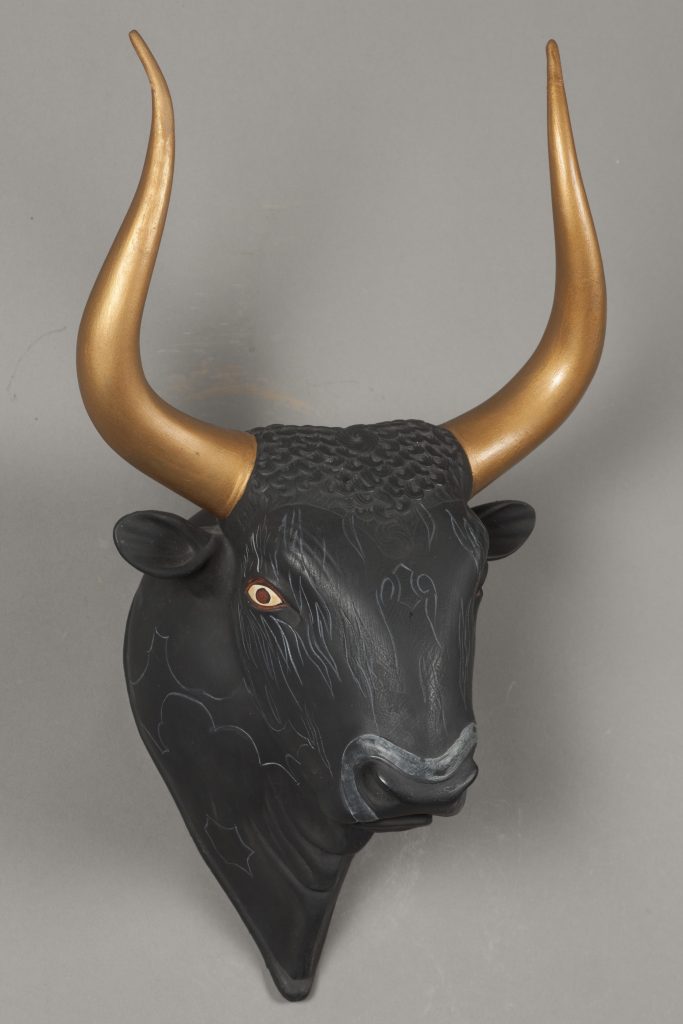
Aurochs (Latin: urus)
The aurochs was the mighty wild beast from whom most domestic cattle are descended. Now extinct, this bovine creature once roamed across Europe, where it was hunted by the Greeks and Romans. Their huge horns were prized as hunting trophies and were sometimes made into drinking cups.
Cattle (Greek: bous. Latin: bos)
Domesticated cattle played an important role in Greek and Roman life. Oxen were sturdy creatures used for agriculture and bulls were specifically coveted for religious sacrifice. Cattle were so important as working animals that their meat was generally reserved for consumption during sacrifices, rather than being eaten on a regular basis. This was especially true for the Greeks, for whom the consumption of meat in general was closely linked with religious practice. Instead, sheep and goats were much more commonly kept for their meat and dairy, although it is worth noting that meat, regardless of which animal it came from, was much more of a luxury than it is now.
Dogs (Greek: kyon. Latin: canis)
Dogs have been man’s best friend since antiquity, even being referred to as “that most faithful friend of man, the dog” by the Roman historian Pliny the Elder nearly two thousand years ago. While this is surely not the first example of such a phrase, it shows the Romans were just as fond of these four-legged companions as we are. The Greeks were equally as fond of them, but this did not mean they were exempt from occasionally becoming food; according to contemporary historian Andrew Dalby, the Greek physician Galen mentions the nutritional value of dog meat, but their use as food is very rarely mentioned in other ancient texts.
As well as companionship, dogs were also valuable guards and hunters. In fact, dogs were frequently featured in mosaics at the entrances of Roman homes. A famous example can be found at the House of the Tragic Poet in Pompeii. These mosaics, sometimes accompanied by the text cave canem (“beware the dog”), are often considered to be depicting guard dogs. The Teece Museum itself is home to a large hunting dog mosaic from Roman Syria belonging to the Logie Collection. The Collection is also home to a contrasting canine depiction – a Greek column-krater shows a delightful small dog trotting alongside a barbitos player (JLMC 182.97).
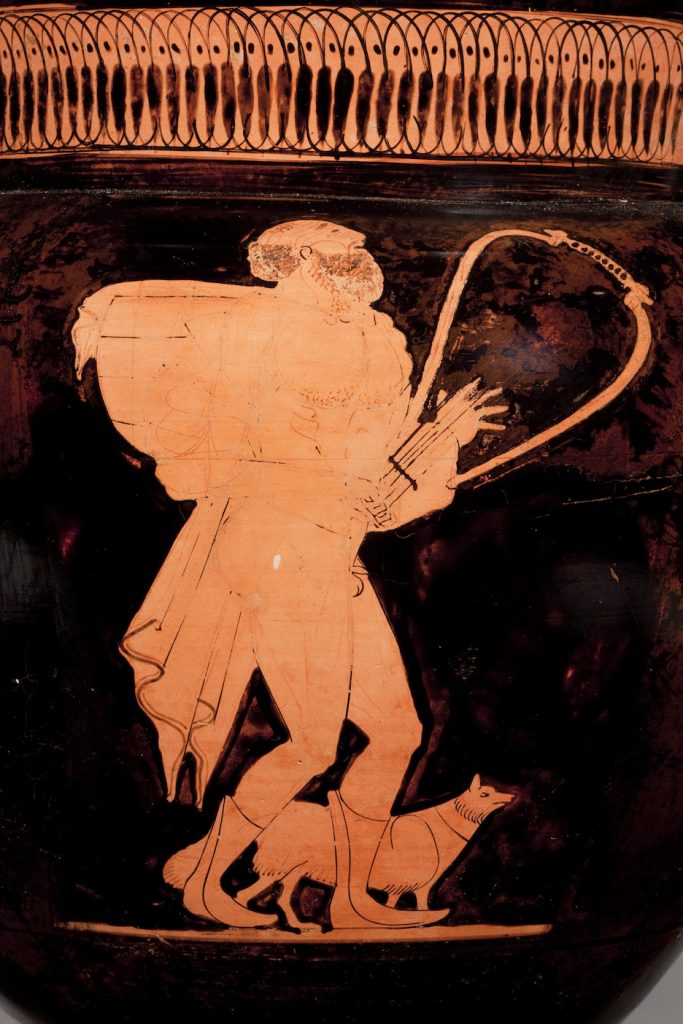
We get the word cynic from the Greek word kyon. Diogenes the Cynic, also known as Diogenes Kynikoi (dog-like), was one of the founders of the Cynic School of Philosophy, which espoused the belief that humans should live simple lives and pursue their basic needs without all of the complications of modern living. Diogenes originally received the epithet kynikoi as an insult, but found the name fitting to his lifestyle.
Elephants (Latin: elephantus)
One of the most famous examples of elephants appearing in antiquity happened during the second Punic War (218-201 BCE) when the Carthaginian general, Hannibal, brought war elephants over the Alps. These elephants are thought to have been either the now-extinct North African or the Syrian elephant. Though elephants are not native to Italy, war elephants were also utilised by the Romans.
However, Hannibal was not the first to bring elephants to Italy. War elephants were also used by King Pyrrhus of Epirus during the Pyrrhic Wars. During the final Pyrrhic battle, the Battle of Beneventum in 275 BCE, the Romans were able to capture eight of these elephants, but it was not until after the Punic Wars that use of war elephants was properly taken up by the Romans.
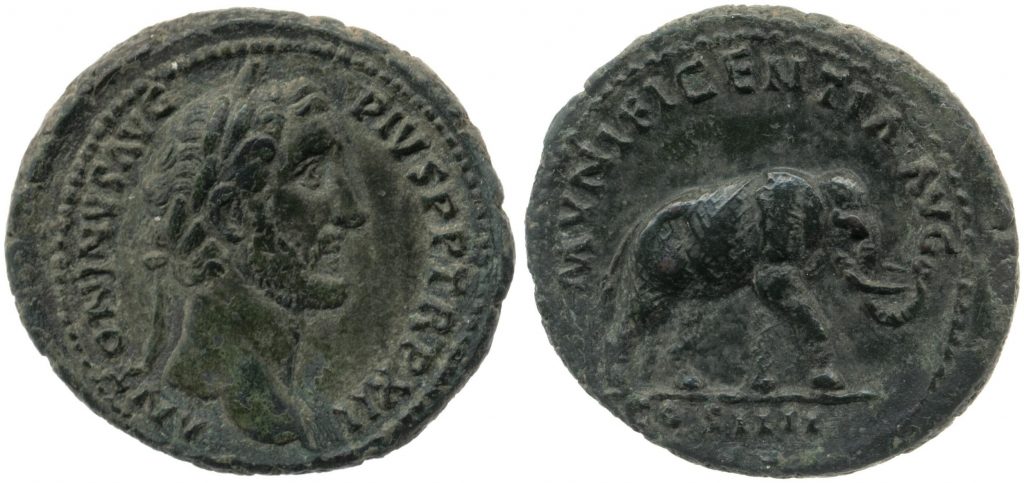
The historian Pliny the Elder (23-79 CE) wrote a great deal on elephants in his work The Natural History, providing more ancient insight into the animals. According to Pliny, elephants were the closest in intelligence to humankind. Despite their use in war, he noted that they were naturally gentle animals. The Greek philosopher Aristotle (384-322 BCE) had also commented on the docile nature of elephants in his much earlier work History of Animals, further noting that they were easily tamed.
While elephants have never been truly domesticated, they have been used by humans for thousands of years for war, entertainment, and their ivory. The tradition of killing elephants for their ivory is even mentioned by Pliny, and while war elephants are a thing of the past, and their use in entertainment is now rare, this last tradition has unfortunately followed us into the twenty-first century, and alongside habitat loss, is one of the leading causes of their endangerment. Elephants are now highly endangered, and without drastic action, our remaining species of elephants will join the North African and Syrian elephants in extinction.
Panthers / Leopards (Greek: pardalis or panther. Latin: pardus or panthera)
Nowadays, the word panther is not the formal name of any particular animal, but is commonly applied to leopards, jaguars, and cougars collectively. The Latin term ‘Panthera’ serves as the official name for the subfamily of cats which includes leopards, lions and tigers. Once prevalent in the ancient wild, these big cats are now endangered. The Romans no doubt helped their endangerment along; exotic and ferocious animals were popular at public spectacles and were often made to fight or were hunted for entertainment. Bestiarii were a particular type of gladiator who fought against animals in the arena, either voluntarily or as a death sentence.
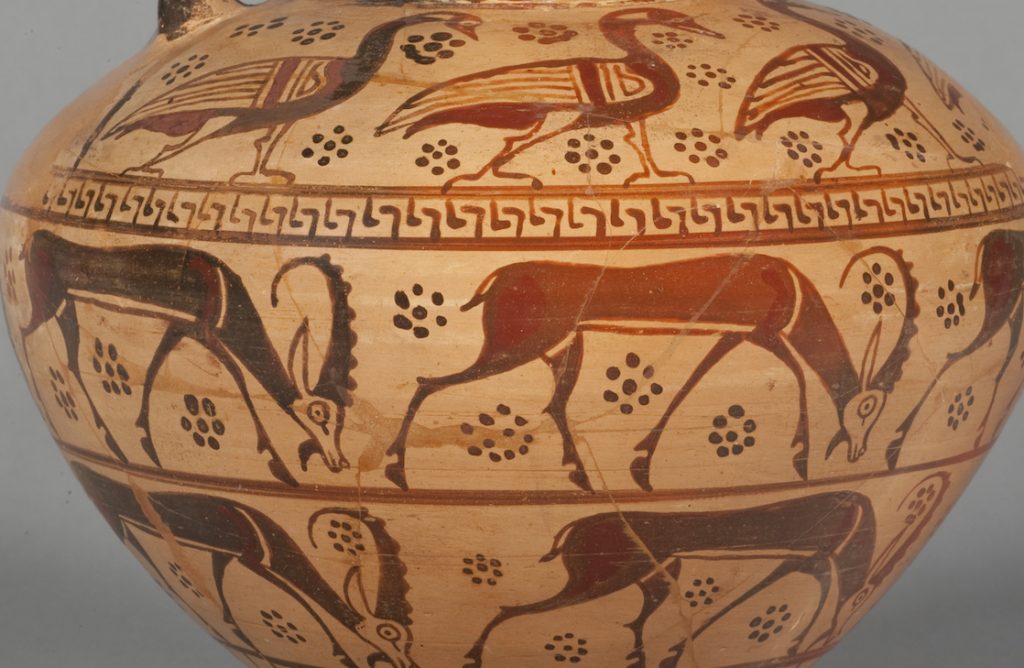
Goats (Greek: aix. Latin: capra)
While goat milk is not common these days, it was much more regularly consumed in the ancient world. Goats were not as useful as cattle as working animals and so they were raised mainly for their milk, meat and skins. Goats generally require less land and resources than cows, and have a slightly higher milk production to resource consumption ratio. Although they produce less milk overall, goats would have been ideal meat and dairy animals for poorer farmers or families. As the Romans and Greeks did not have refrigeration or pasteurisation, goat milk would have been safest to consume only when very fresh (limiting its use), or when fermented into delicious cheese – a much more accessible option.
Goats were also depicted in mythology; the goatherd nymph Amalthea helped protect the infant Zeus from his hungry father Cronus. Sometimes Amalthea herself is depicted as a goat. A procession of six grazing goats can be seen around this Etruscan oinochoe (wine jug) which was possibly made in the city Vulci in Etruria (JLMC 69.64).
Sheep (Greek: probaton. Latin: ovis)
Sheep milk or cheese is even harder to find now than goat milk (at least in New Zealand) but for the Greeks and Romans it was just as popular. According to Aristotle, cheese was commonly made with a mixture of goat and sheep milk, possibly making an early variant of feta cheese. In New Zealand feta is often made with cow’s milk, but in some countries, it is still made predominantly with sheep and goat milk.
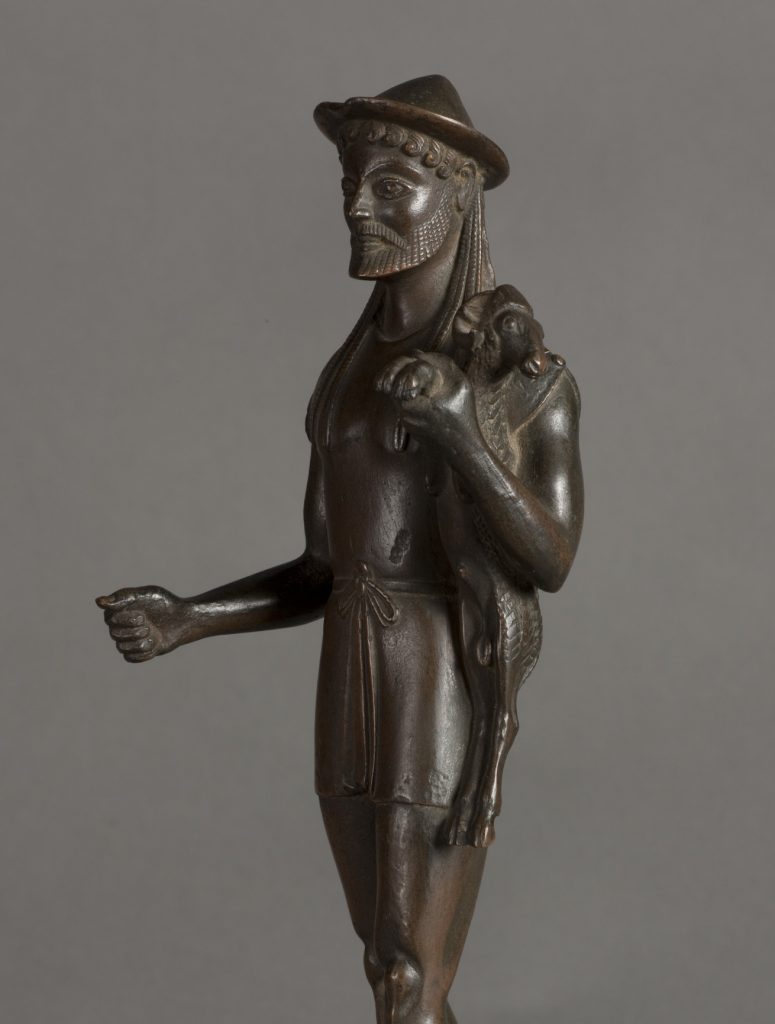
In this statuette of Hermes belonging to the Logie Collection, a sheep is being carried under Hermes’ arm to sacrifice. Although less prestigious than cattle, sheep were also used in religious sacrifice by the Greeks and Romans (JLMC CC33).
Laura Bythell is currently working towards completing a Bachelor of Arts majoring in Classics. She has worked as a gallery host at the Teece Museum since 2017.
Images: Unless otherwise stated, all images are © University of Canterbury. Photographer Duncan Shaw Brown
References:
Andrew Dalby. Food in the Ancient World from A to Z. Routledge. 2003.
Aristotle. The History of Animals. Accessed July 2020, URL: http://classics.mit.edu/Aristotle/history_anim.1.i.html
Galen. On the Natural Faculties. Accessed August 2020, URL: http://www.perseus.tufts.edu/hopper/text?doc=Perseus%3atext%3a1999.01.0256
Pliny the Elder. The Natural History. Accessed June 2020, URL: http://www.perseus.tufts.edu/hopper/text?doc=urn:cts:latinLit:phi0978.phi001.perseus-eng1:1.dedication
Strabo. Geography. Accessed August 2020, URL: http://penelope.uchicago.edu/Thayer/E/Roman/Texts/Strabo/home.html
Loved this article! Beautifully written